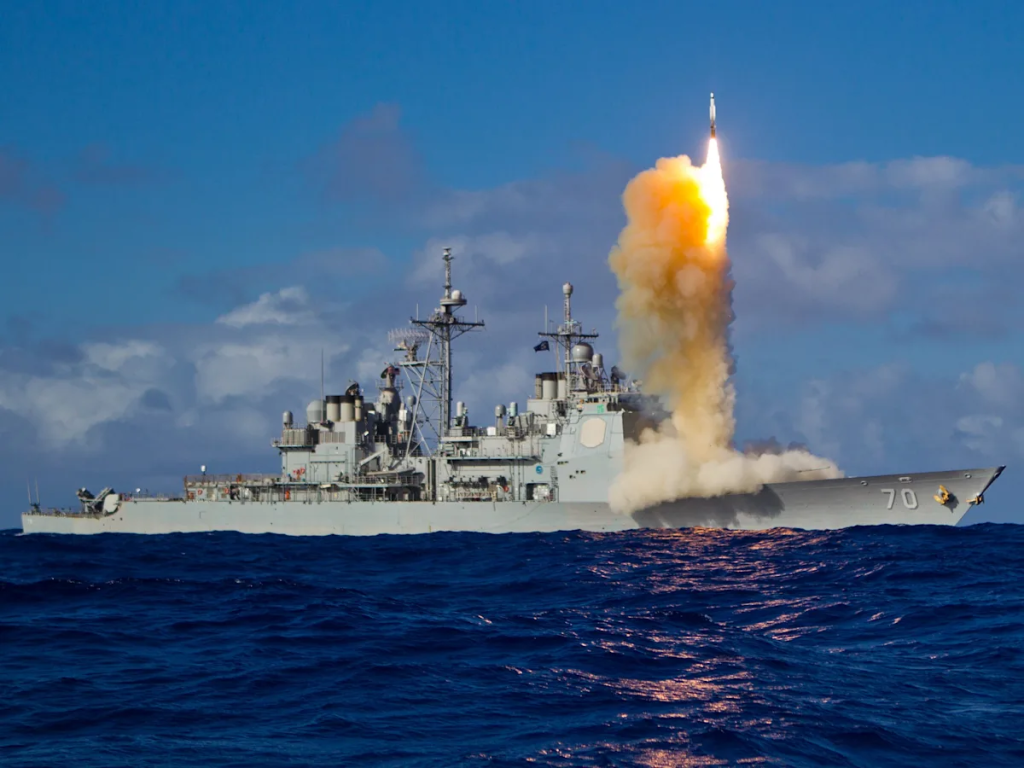
- The US Navy said its warships shot down multiple Iranian ballistic missiles earlier this month.
- The Navy had sent five destroyers to the eastern Mediterranean to provide air defense for Israel.
- The intercepts come as Navy leadership shares its concerns about its stockpiles of top missiles.
US warships intercepted multiple Iranian ballistic missiles aimed at Israel this month, the Navy confirmed over the weekend, sharing new details from its third defense of Israel in a year and a half.
Israel launched a new military operation against Iran on June 13, prompting Tehran to retaliate with waves of missile attacks. The US Navy moved five of its Arleigh Burke-class destroyers into the Eastern Mediterranean Sea for support if needed.

The destroyers — USS Thomas Hudner, USS Arleigh Burke, USS The Sullivans, USS Oscar Austin, and USS Paul Ignatius — are equipped with high-end interceptors that are specifically designed for ballistic missile defense.
Officials had previously confirmed that the US ships were providing air defense for Israel, but it was unclear whether they scored any hits. In a statement on Sunday, however, the Navy disclosed that the destroyers had intercepted “multiple” Iranian ballistic missiles since June 14.
The Navy didn’t say which interceptors the destroyers used against the Iranian missiles and referred additional questions to US Central Command, which oversees Middle East operations. Business Insider reached out to Centcom for more information but didn’t receive a response.
The Navy didn’t say which interceptors the destroyers used against the Iranian missiles and referred additional questions to US Central Command, which oversees Middle East operations. Business Insider reached out to Centcom for more information but didn’t receive a response.

The disclosure has come as Navy leadership raises concerns that the sea service is burning through one of its top ballistic missile interceptors, the Standard Missile-3. Just last week, Adm. James Kilby, the acting chief of naval operations, told lawmakers that American warships were using the SM-3 “at an alarming rate.”
Navy warships fired SM-3 interceptors to defend Israel from large-scale Iranian missile attacks in April and October of last year.
The SM-3 missile is an important element of the Navy’s Aegis Combat System, equipped on Arleigh Burke-class destroyers and Ticonderoga-class cruisers. It uses a kinetic kill vehicle to destroy short- to intermediate-range missiles during the midcourse phase of their flight.
The SM-3 is produced in multiple variants, which can cost as little as $10 million on the low end and nearly $30 million on the high end, according to the US Missile Defense Agency.
Analysts have argued that the Navy is depleting its SM-3 stockpile in the Middle East without sufficient plans to replace it, which could be an issue in a Pacific conflict, where these interceptors would most likely be needed in large quantities. China, a leading concern, has a large arsenal of ballistic missiles.
And the SM-3 isn’t the only missile interceptor that the Navy is heavily expending in the Middle East. American warships have fired hundreds of SM-2s and SM-6s to defend against attacks by Iran-backed Houthi rebels in Yemen.
US military planners have said one of the challenges of the Red Sea conflict is being forced to use expensive interceptors to defeat cheap Houthi drones. Trying to get on the right side of that cost curve — saving the higher-end missiles for more advanced threats — is an ongoing focus in training across NATO.
2 Mayport destroyers among ships Joint Chiefs chair hails for stopping Iranian missiles
Two Mayport-based destroyers worked with other U.S. Navy warships to intercept Iranian ballistic missiles headed toward Israel in the aftermath of intensified conflict between the Middle East states, the Navy reported.
The chairman of the U.S. Joint Chiefs of Staff, Air Force Gen. Dan Caine, praised the crew of the USS Thomas Hudner while leading a delegation of military leaders visiting the ships June 29 during a port call in Souda Bay, Greece.
“I am incredibly proud of these sailors and grateful for their service,” Caine said, according to a Navy release. “They have made tremendous contributions to America’s, and the region’s, security.”
The Hudner had operated the defense effort with the USS The Sullivans, also Mayport-based, as well as the destroyers USS Arleigh Burke, USS Oscar Austin and USS Paul Ignatius in a joint effort that began June 14. Besides the Mayport ships, the others are homeported in Rota, Spain.
“Thomas Hudner represents the best and the highest standard of our Navy,” Adm. Stuart Munsch, commander of U.S. Naval Forces Europe-Africa, said during the visit, according to the release. “…The naval forces operating in the European theater and beyond have shown that our Navy is prepared, postured, and ready for the challenges we face.”
The destroyers are all equipped with Aegis weapons designed for missile defense and the group “intercepted multiple Iranian ballistic missiles,” the release said.
While far removed from the Middle East, Mayport vessels have a history of roles in conflicts involving Iran. In May 2024, the U.S. Navy Secretary Carlos Del Toro visited the base to praise the crew of the destroyer USS Carney for going “above and beyond the call of duty” during a deployment where they conducted 51 engagements, including operating alongside the Arleigh Burke to engage Iranian ballistic missiles fired at Israel. In 1987, Exocet missiles fired by Iraqi forces during the Iran-Iraq war devastated the Mayport-based guided-missile frigate USS Stark, killing 37 crewmembers.



